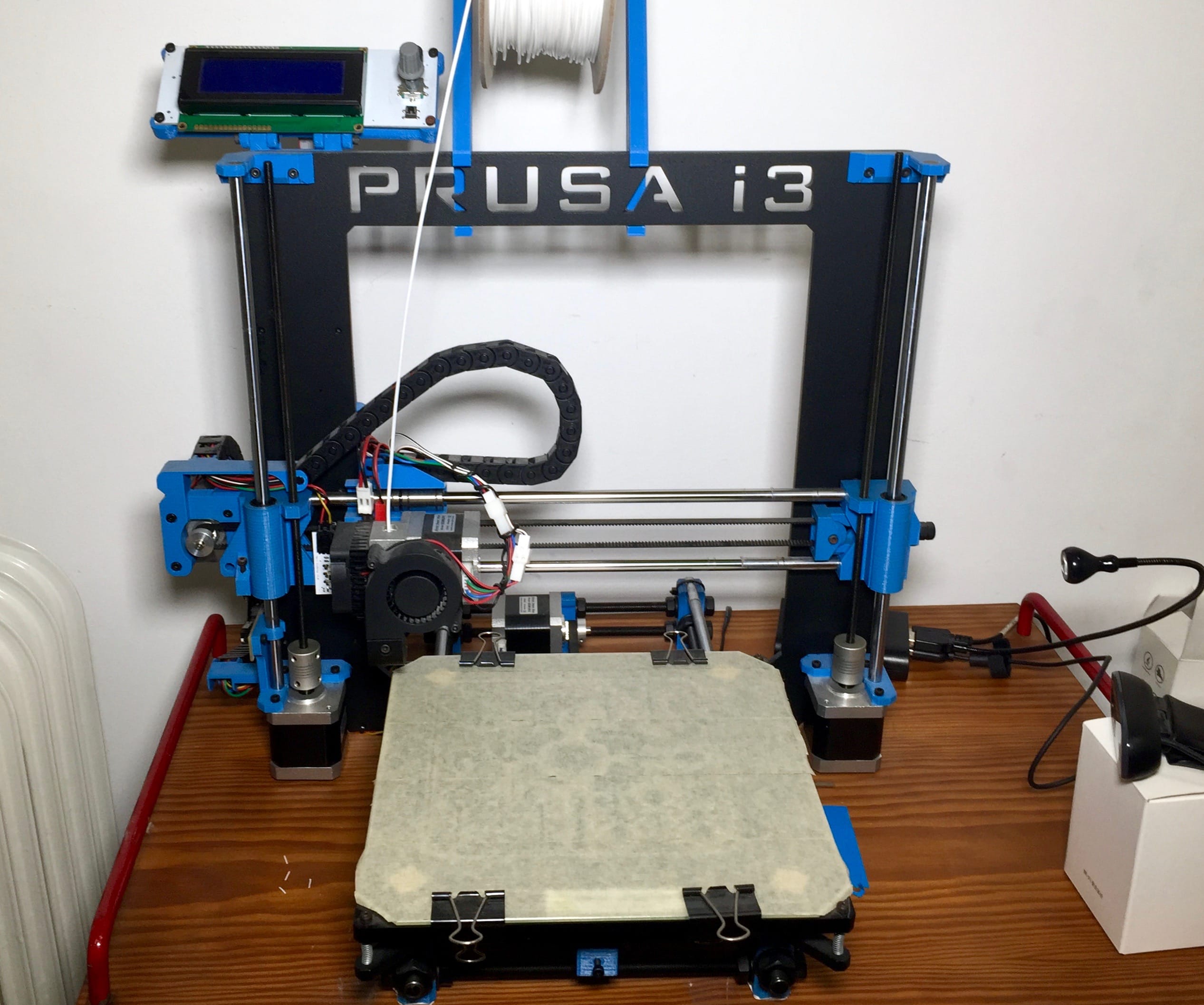Rainy days make for excellent times to revisit hobbies, and yesterday I took the time to do some more hardware stuff–but this time, it was a bit more physical, since I decided to tweak my 3D printing setup a bit and print out a couple of pieces I needed.
After three years and a bit of a rocky start (some initial teething troubles and replacement of a few parts), I still think buying the BQ Prusa i3 Hephestos was a good deal–I had lots of fun putting it together, and it’s turned out to be extremely reliable, provides good enough print quality for my needs and has been extremely easy to maintain.
Regular calibration and a few spots of machine oil have been more than enough to keep it going, and the only fault I can find is that it is a bit slow compared to some of the new designs that have been coming out1.
As to modding it, I haven’t felt the need to add a heated bed, extra nozzles or much of any kind of add-ons except a set of rubber feet, although I do have far more spools of PLA filament than I could possibly need. The one little annoyance I have is that mounting the spool above the printer makes it rattle a bit on some prints and may contribute to added vibration, but the frame is sturdy and I made a point of tightly fastening it, so print quality appears not to suffer much.
Being an open design, the printer gathers some dust, but maintenance is trivial and, again, it is quite resilient when assembled properly, so you can neglect it to a fair degree–mine has been sitting in the open atop a small cart for the past three years, and still works fine.

with the Pi 3 powering a small spotlight and a repurposed webcam.
Over the years, I have printed a variety of small enclosures and assorted bits and pieces for hardware projects (not necessarily electronics ones), and improved the results over time by learning how to calibrate various aspects and doing a fair bit of post-printing finishing (sanding and buffing does wonders for the finished product).
Printing and finishing time, in fact, are the main caveats of 3D printing as a hobby–I will happily spend a few hours designing a holder or enclosure, but having to run the printer overnight to hold the results is still a bit of a put-off, even if it is rather rewarding to hand-polish pieces to perfection.
Software & Upgrades
Most of my designs are done in OpenSCAD, for the simple reason that it is much easier to use with version control. Although I am an old hand at 3D modeling (having done quite a bit of it during college) I appreciate the power and simplicity of its declarative approach, and it’s much faster than Blender for me.
It also hasn’t had any breaking changes for years, which makes it the perfect tool for keeping designs around.
But the rest of my stack needed an upgrade–to turn models into G-code you need a slicer, and I’ve been using Cura since the very beginning back at SAPO, so I went and got the latest version to find out that sometime in the past two years it started including a Hephestos profile.
Next up was OctoPi, which I’ve been using from the start. I’ve been using it to run OctoPrint to manage the printer remotely on an original Series B Raspberry Pi with a Pi camera mounted atop its casing, but this configuration has been showing its age–the original Pi is more than a tad slow, and in order to run a few of the newest plugins (like this neat mobile UI and many of the new features I really needed to upgrade the whole thing, so I (somewhat guiltily2) bumped the hardware to a Pi 3, and in the process I got rid of the ancient Wi-Fi dongle I was using and got extra USB slots for an IKEA JANSJÖ USB lamp and an easier-to-position Logitech USB webcam.
However, I soon found out that Octoprint 1.3.5 didn’t like the rather outdated Hephestos 1.3.1 firmware I was running.
Fortunately, BQ has been steadily maintaining the firmware for the past three years, and upgrading was a snap–I still have a Docker build recipe for building my own firmware, but it wasn’t necessary at all (I just plugged in the printer to one of my laptops and ran an updater) and that’s a good thing. In fact, it was the main reason I thought it worthwhile to write this.
It’s nice to see BQ standing behind a product that they started out selling in kit form, that caters to a very specific niche and that, given its current lifespan, would essentially be considered obsolete in so many other tech circles…
Maybe there’s a lesson here for the software folks.
-
Like many, I’ve been wondering if this new algorithm from Michigan University could be folded into the mainstream Marlin code and make its way to the Hephestos, but it seems to require a fair bit of extra hardware. ↩︎
-
The sheer waste of having a quad-core CPU minding the printer annoys me a bit, but everything (except the actual physical printing) is so much faster now that I suppose I’ll get over it quickly. ↩︎